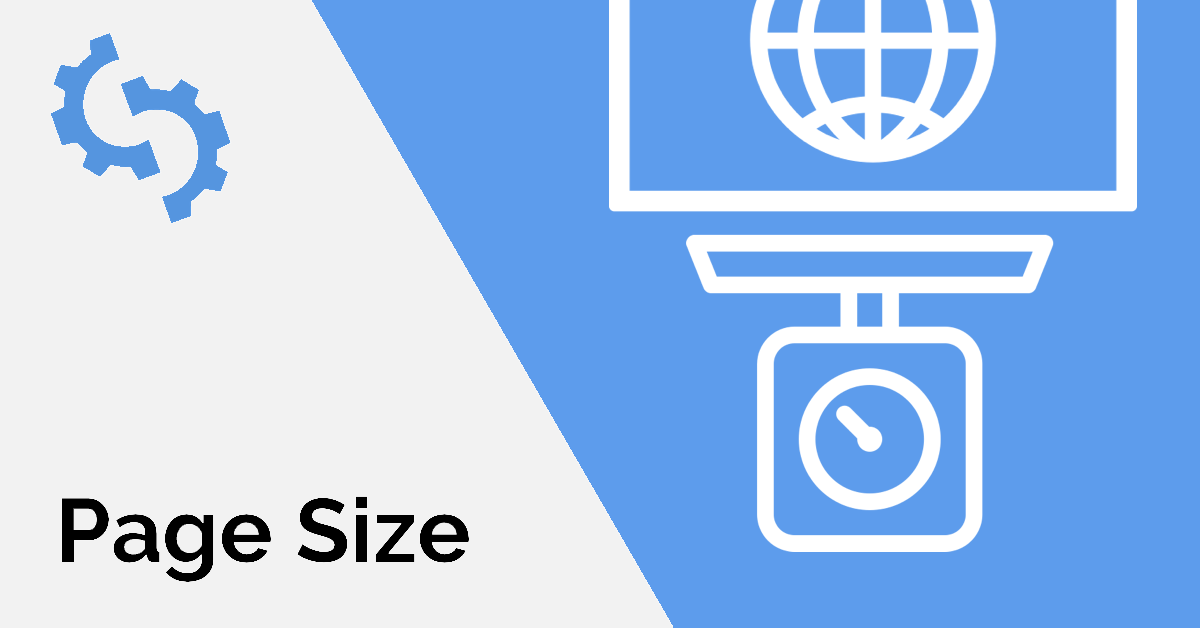When page sizes become a pain point for SEO, it’s a wake-up call. With internet speeds increasing, any technical glitches can hamper the entire user experience. What can you do? At first, look at the Core Web Vitals to keep a check that your page matches up to Google’s metrics. Plus, have an SEO audit to determine your page size, then optimize it.
What is page size in the SEO world?
Here’s the thing, the downloaded file size of a given web page is referred to as page size in the SEO world. It is made up of all the files, such as HTML, CSS, JavaScript, or image files that make up the page.
Why is the page size important?
In 2021 and beyond, web page size is one of the most important factors to measure. Why? It’s simple, the longer it takes to display the faster it will be pushed down the ranks by Google. Plus, an increase in loading time leads directly to a decrease in revenue or leads for many sites. Here are some interesting insights on the web page sizes front.
Increasing Web Page Sizes
The average web page size in 2010 was found to be around 450kb. Today, in 2021, it is 1969kb, which is 4 times more. When it comes to the average CSS size in 2010, it was found to be around 16kb. Now, in 2021, it is around 64kb, which is also around 4 times more. Moreover, images and JavaScript files have an increase of around 400%, which are factors that also affect page size. So, as web pages evolve, one needs to work on making sure that websites are both visually appealing and also not sluggish or slow to respond.
Here are some speed indicators that are affected by this behavior.
- First Contentful Paint
It’s the number of seconds from the time the user navigates until the page’s primary content appears on the screen, which has come up by almost 34%.
- DOMContentLoaded
This focuses on the number of seconds from the time the navigation starts until the initial HTML document has been completely loaded and parsed, which has gone up by almost 22%.
- onLoad
This facet focuses on the number of seconds from the time the navigation starts until the document and all of its dependent resources have finished loading, which has gone up by 5% for desktop. Plus, a whopping 392% for mobile devices.
Key Takeaways
You should focus on the web page size because of some of the following factors:
- Load Speeds
As per Google Webmasters, load speeds will be a critical factor when it comes to ranking web pages.
- Mobile Search
Google also announced that for the first time the use of mobile phones will be considered when conducting online searches. So, the behemoth initiated mobile-first indexing. Thus, it may be a huge concern because web pages take more time to load on mobile devices in comparison to their desktops. One of the ways that one can improve load time on mobile devices is to reduce the web page size.
- Web Hosting Costs
Here’s the thing—hosting plans for your website are based on bandwidth. So, if your web pages are large, chances are it will need more bandwidth. Moreover, it impacts the cost of hosting your website.
Tools for Checking Your Web Page Size
Before you get to optimize, it is prudent to understand the level of optimization required. One can use several tools available for checking the web page size. Tools such as Google Page Speed Insights and Screaming Frog SEO Spider are quite handy.
Best Practices to Optimize Web Page Size
Now, that you know the extent of optimization, you may wish to follow some industry best practices.
- Image Optimization
One of the things you may want to focus on is optimizing images. Here you can work on the physical pixel size, overall image size, and maintaining high-image quality. Currently, you may find Adobe Photoshop having the gold standard when it comes to image compression. Plus, you may check out the paid version of tools like Smush Pro. For those using WordPress, there are quite a few plugins that may come in handy. You can explore plugins such as the Shortpixel Image Optimiser or Tiny Compress Images.
- Minimize Usage of Custom Fonts
It’s always safer to use fonts like Arial, Helvetica, Verdana that are well-supported on the web. Plus, you can skirt issues that come out of using the custom fonts.
- Reduce Your HTML and CSS
When you try minification of your files including HTML and CSS, you can benefit from decreasing your web page size. There are quite a few tools that can help this endeavor, such as Toptal.com’s JavaScript Minifier plugin, WP Super Minify, and Autoptimize WordPress plugin.
- Eliminate Plug-in Bloat
Remember to scale down the usage of plugins. For example, adding plugins to a WordPress site may negatively impact the web page size. So, be cautious when it comes to using plugins, as you don’t want it to affect your page speed.
Wrapping Up
Ultimately, the entire exercise of web page optimization serves the Core Web Vitals. However, it benefits your visitors, viewing your site. Optimized home pages often lead to a more pleasant user experience, leading to happier customers. Get ready and optimize!

